More than half of Ireland’s native plants are in decline, while many of the habitats on which Irish wild plants depend have been destroyed or altered by farming and forestry since the 1950s, according to a 20-year study.
The findings are detailed in the latest plant atlas compiled by the Botanical Society of Britain & Ireland (BSBI) published on Wednesday.
The largest-ever recording of plant life on the island of Ireland confirms “the devastating loss of Ireland’s wild plants” in particular. Almost 3 million plant records were fed into the project.
Its compilers describe it as “the most powerful assessment ever produced on the state of our wild and naturalised plants”.
READ MORE
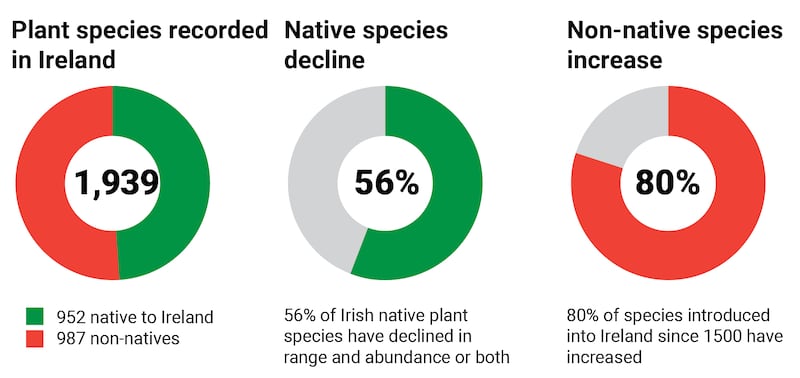
It shows a 56 per cent decline in range or abundance – and often both – in Ireland’s native plants, with native grassland plants suffering most, while 80 per cent of non-native plants, introduced since 1500, are increasingly dominating the landscape.
In addition, many plants of lakes and wetlands have also declined, indicating growing pressure on these habitats, Plant Atlas 2020 indicates.
Grassland species loss is most pronounced in areas of intensive agriculture, while the loss of lake and freshwater species is largely attributable to runoff pollution in the form of excess nutrients – arising from farms near watercourses, poorly-treated wastewater and discharges of raw sewage.
Most of the non-native species becoming increasingly evident are benign, but some, such as Himalayan balsam and rhododendron, are now invasive, with a negative impact on the native flora, the Atlas shows.
Re-seeding, over-fertilising land, nitrogen deposition, herbicides, soil drainage and changes in grazing pressure have all contributed to the decline of species such as agrimony, field gentian, marsh lousewort and many others, it adds.
The decline of grasslands is particularly evident in the south and east due to intensive dairy agriculture and tillage ‑ with “clean seeds” eradicating ancient plant species known as archaeophytes.
Lakes and wetlands have been severely affected since the last atlas was compiled; “some lakes are now dominated by the few aquatic plants favoured by nutrient enrichment, such as the introduced nuttall’s pondweed”.
Many peat bogs have been planted with conifers or converted to agriculture, excluding the native bog plants such as heathers and sundew, it finds.
Peatland habitats are important for carbon storage, and their restoration is essential as part of efforts to combat climate change. There is evidence that climate change may have affected Irish flora by helping some southern species to spread northwards. A range of orchids and once-common species such as the cowslip are rarely observed.
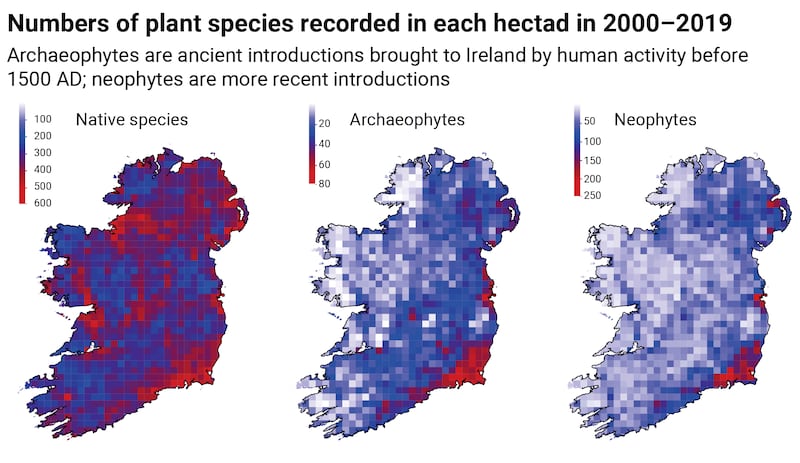
Plant Atlas 2020 is the most in-depth survey of British and Irish flora ever undertaken. It builds on two previous atlas surveys undertaken by the BSBI. In Ireland, nearly 3 million plant records of 1,939 species were collected by 2,500 people including botanists, scientists and trained volunteers.
BSBI president Dr Micheline Sheehy Skeffington said: “Plant Atlas 2020 is a massive achievement, but it must be seen as a wake-up call for action. Plants are the basis of all biodiversity.”
She added: “The results of this unprecedented survey will inform our governments and help strengthen their work to conserve plants and the habitats on which they depend. We are also working with the wider public, providing training and resources to help people understand more about Ireland’s wild plants.”
BSBI head of science Dr Kevin Walker, a co-author of the atlas, said there were many ways to reverse the decline of flora, “but the most important are to increase the protection plants receive, extend the habitat available to them, and to place their needs at the very heart of nature conservation”.
“We also need to ensure our land, water and soil are managed more sustainably so that plants, and the species which rely upon them for food and shelter, can thrive,” he added.
“It is a snapshot view of the status of all our wild flora in these islands. It is a basis for plans to better conserve plant species and their habitats, focusing on those in greatest peril,” Dr Sheehy Skeffington said.
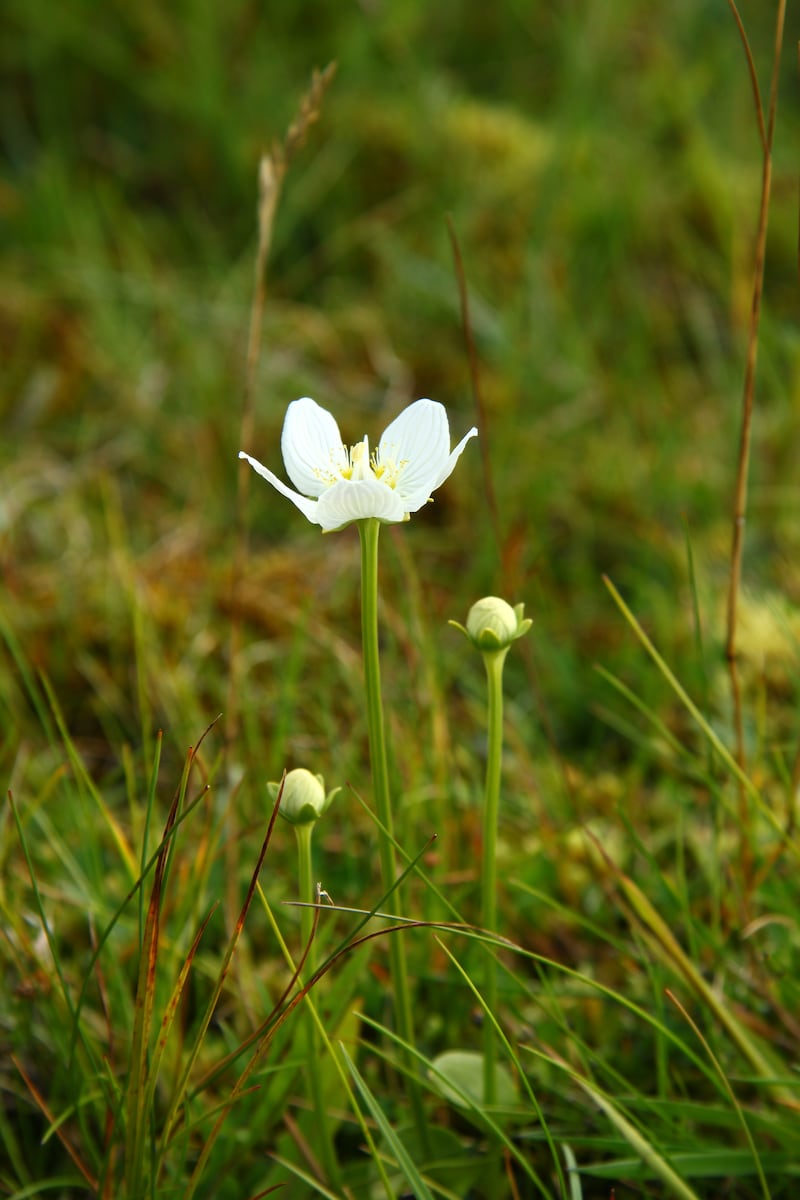
“The stark reality that 56 per cent of our native species have declined since recording for the second atlas began in 1987.” The decline is worse than in Britain, which stands at 53 per cent.
By comparing the amount and variety within 10 x 10km squares in 2000, current numbers are derived and mapped for the atlas.
Dr Sheehy Skeffington highlighted some worrying trends, including the demise of grass-of-Parnassus, which is not a grass but an attractive flower. This fen species likes wet, calcareous or chalky habitats and its occurrence in Ireland has dropped dramatically since 1987. This is an “indicator species”, whose demise flags a declining habitat – in this case, fenland. “Drainage of these often hidden wetlands and seepages has resulted in the decline of their inhabitants such as this species.”
The field gentian is another species that has declined dramatically. It grows in grassy heathland and does not survive soil enrichment or heavy grazing.
Other species that are falling include orchids sensitive to nutrient enrichment, notably the fly orchid and greater butterfly orchid, “yet are so special when we find them, usually in damper heathland. But all of these are smothered should grazing be abandoned and shrubs return. Low-intensity farming is essential to preserve them.”
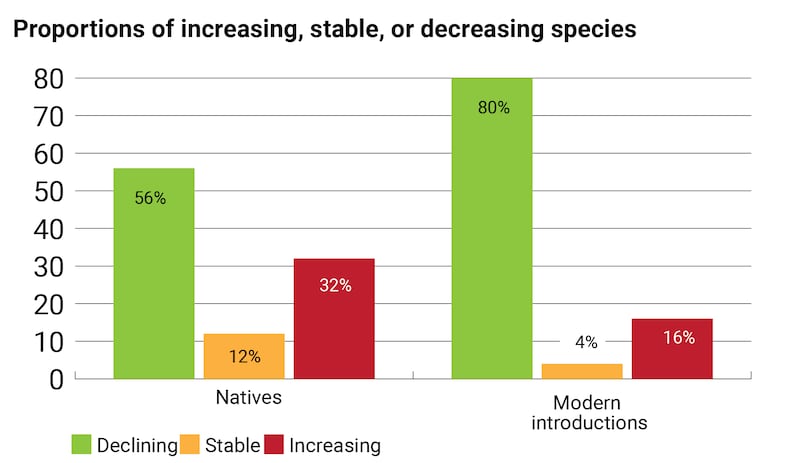
The latest data means distributions and trends for a number of associated species can be combined to identify spots throughout the island where habitats and their plants are most threatened.
“In some cases, such as lakes and rivers, this may be reversible long-term, since it is due to increased nutrients and mud or peat running off into the watercourses. This can be and should addressed locally, as many of the more sensitive species such as the rare slender naiad have declined dramatically,” she said.
Many lakes are “almost destroyed” from a species mix point of view, notably Lough Leane in Co Kerry and Lough Derg on the Shannon, which are in a very poor state, she said.
Dr Sheehy Skeffington singled out the inadequate response of the Department of Agriculture, rather than farmers, for the decline in species in many instances.
The department needs to work more closely with the National Parks & Wildlife Service “to support farmers, the custodians of our landscape, to preserve our wild habitats”, she added.
“Plant species define a habitat and form the basis of all life. Their loss results in the loss of many more insect and other species... farmers understand the land better than anyone. So working with them towards a results-based system is vital.”
This requires working towards a goal of “highest achievable species diversity on a field-by-field basis” and for the farmer to be paid in proportion to how far that goal has been reached, with increments based on higher results.
“This is what got international acclaim and awards in the Burren farming programme – and it really worked,” she said. “It works well not just for the farmers, but for the community at large.”
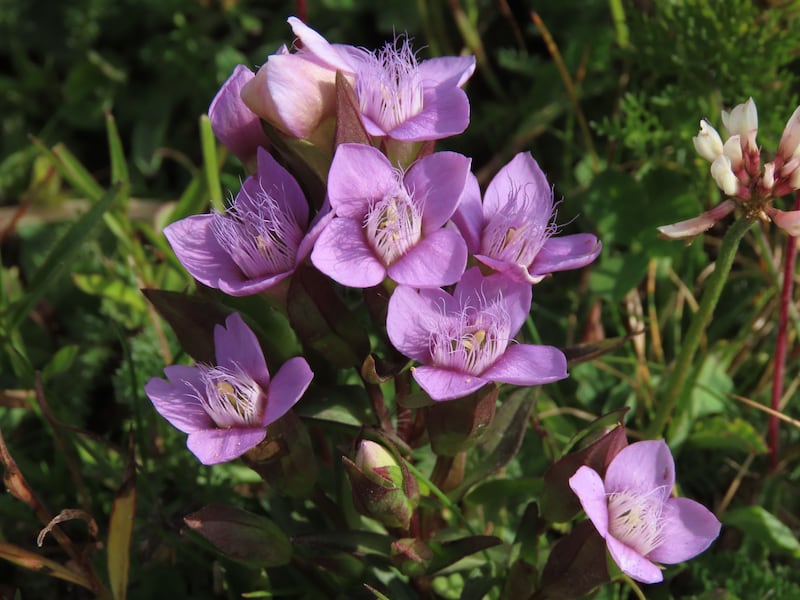
Of the 1,939 plant species recorded in Ireland, 952 were native. Among 987 non-natives were 890 recent introductions, many of which originate from gardens and then spread to establish self-sustaining populations, while 97 were ancient (pre-1500) introductions.
Minister of State for Heritage Malcolm Noonan will officially mark the launch of the atlas at the National Botanic Gardens in Dublin on Thursday. The Ireland’s Changing Flora report summarises key findings from the atlas and trends impacting the current state of Irish flora, assesses changes since the 1950s, and analyses the drivers of change, such as habitat loss, pollution and climate change.
The BSBI distribution database now holds more than 50 million plant records, making it one of the world’s largest biological recording databases.












